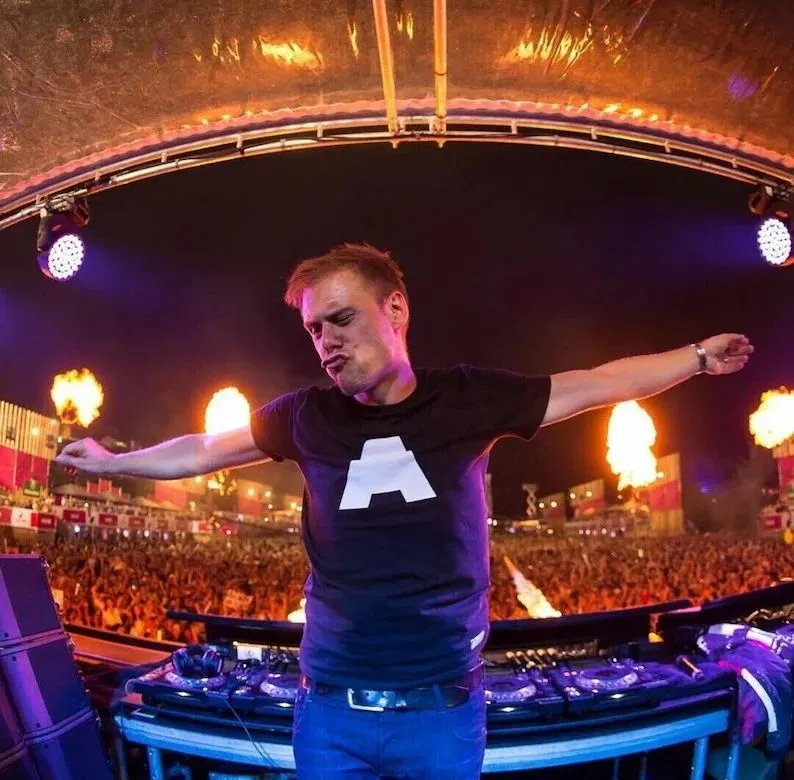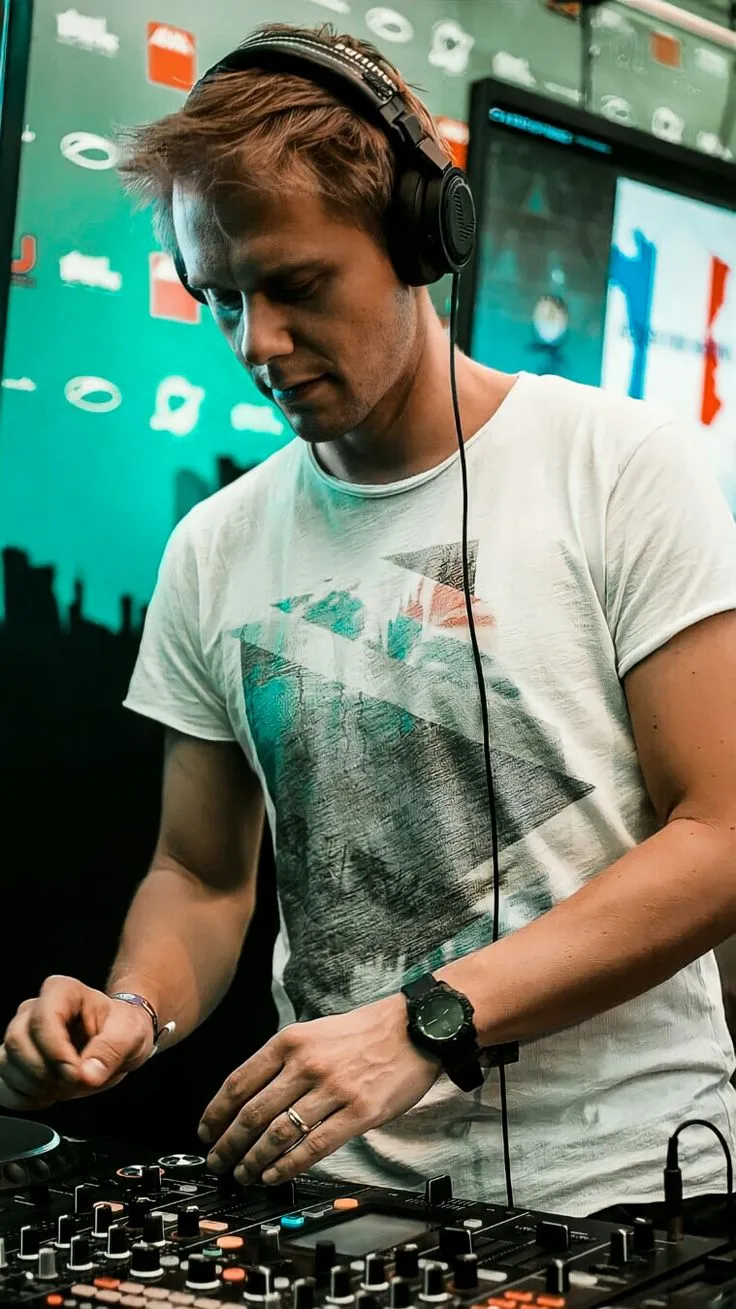

From Pure Trance to Film Scores – The Journey That Made Armin a ‘Traitor’ or a Pioneer?
Armin van Buuren is not just another DJ. He is one of the rare few who turned trance from a niche underground movement into a global phenomenon, with his name consistently tied to innovation, controversy, and transformation. But how did a law student from Leiden become the face of trance, and more importantly—why has his sound shifted so dramatically over the years? Fans often debate whether Armin has “abandoned” trance or simply expanded its boundaries, and the truth may shock those who have only followed his recent work.
Armin’s Early Days – The Pure Trance Years
When the name Armin van Buuren first appeared in the late 1990s and early 2000s, it stood for classic trance purity. His early productions like Blue Fear (1997) were atmospheric, euphoric, and structurally simple yet hypnotic. Back then, trance was about escapism, about losing yourself in repetitive yet emotional loops that stretched far beyond radio-friendly formats.

His early compilations and the launch of A State of Trance (ASOT) radio show in 2001 cemented his status as the trance leader. Every week, millions tuned in to hear what the “King of Trance” had to offer. By then, trance was more than just a genre—it was a culture. Keyword: Trance music pioneer.
But here’s where things get interesting: even in those early years, Armin was already showing signs that he might not be confined to trance forever. Tracks like Communication hinted at progressive house elements, foreshadowing the evolution to come.
The Golden Era – “Shivers” and Emotional Trance
If there’s one album that defined Armin’s emotional peak, it’s “Shivers” (2005). Fans still argue that this was the perfect balance between underground credibility and mainstream accessibility. The title track with Susana is not just a song—it became an anthem, a moment in electronic history.
During this era, Armin’s music was deeply connected to storytelling. Long buildups, euphoric drops, vocal collaborations that cut through the heart—he was the poster child of trance’s golden age. Even when the global scene shifted, Armin stayed loyal to his core sound, and it paid off.
But soon, the electronic world would change. And so would Armin.
Breaking the Mold – Entering the Pop World
Around 2012–2013, something unexpected happened. Armin released “This Is What It Feels Like” featuring Trevor Guthrie. Unlike his earlier trance anthems, this was radio-ready, pop-infused EDM—and it skyrocketed in global charts, even earning him a Grammy nomination.
Suddenly, Armin was no longer just a trance DJ. He was now an international crossover artist. While some hardcore fans accused him of “selling out,” others celebrated the fact that he finally reached mainstream recognition. Keyword: EDM crossover hits.
And it wasn’t just a one-off. From Another You with Mr. Probz to collaborations with artists like Garibay and Conrad Sewell, Armin showed he wasn’t afraid to explore pop vocals, lighter beats, and commercial appeal. This wasn’t the same Armin who once played marathon trance sets for 12 hours straight. This was a new Armin, willing to risk his legacy for experimentation.
Progressive, Big Room, and Beyond
The mid-2010s marked Armin’s biggest shift. As EDM festivals exploded worldwide, so did the demand for high-energy, festival-friendly tracks. Armin adapted. Tracks like Ping Pong became viral sensations—cheeky, playful, and completely different from his traditional sound.
He started experimenting with progressive house, big room drops, and hybrid festival anthems. Purists complained, but the numbers told another story: Armin was filling stadiums, headlining Ultra, Tomorrowland, and EDC, proving that adaptability was part of his survival.
But there’s a twist. Even while experimenting, Armin never fully abandoned trance. His “Who’s Afraid of 138?!” brand and ASOT festival stages kept the hardcore community alive. It was as if he lived a double life—mainstream pop-EDM king by day, trance preacher by night.

The Cinematic Era – Music Beyond the Dancefloor
In recent years, Armin has gone even further, exploring orchestral projects, cinematic soundscapes, and crossover experiments that few would have predicted two decades ago. His project “The Best of Armin Only” at the Johan Cruijff Arena in Amsterdam was more than a DJ set—it was a multimedia spectacle, mixing visuals, live vocals, and symphonic elements.
Armin has also worked on film-inspired compositions, weaving trance-like progressions into cinematic scores and crossover productions. It is clear that he is no longer just chasing festival bangers. Instead, he seems determined to push electronic music into new artistic territories, blurring the line between classical, pop, and electronic worlds.
Why Armin Changed – The Bigger Picture
Fans often ask: Why did Armin change his sound so much? The answer lies in two simple truths. First, electronic music itself has changed dramatically. The era of pure trance dominance is gone; genres like house, techno, and EDM hybrids now dominate festivals and charts.
Second, Armin himself has changed. After decades in the scene, he no longer feels the need to prove he’s the “king of trance.” Instead, he is redefining what longevity means in electronic music. Reinvention has become his survival tool. Keyword: Armin van Buuren evolution.
And yet, even with all the changes, Armin remains true to one thing: connection. Whether it’s a trance epic, a radio pop hit, or a cinematic score, his music always aims to create a bond with listeners. That’s the secret to his staying power.
The Future – Where Is Armin Going Next?
This is the question that fuels endless speculation. Will Armin return fully to trance roots? Will he dive deeper into film scoring or even experiment with AI-driven music, as many DJs are beginning to explore? Nobody knows for sure. But one thing is certain: he won’t stand still.
And that’s what makes him fascinating. Armin’s journey is not just about music—it’s about transformation, risk-taking, and refusing to be boxed in
Conclusion – Armin’s Legacy in Motion
From pure trance beginnings to global pop success, from progressive experiments to cinematic scores, Armin van Buuren has proven that evolution is not betrayal—it’s survival. While fans may argue about which era was “the best,” the reality is that his career has shaped the history of dance music in ways few others can claim.
Love him or hate him, Armin is still here, still evolving, and still pushing boundaries. And that leaves us with one bold truth: the story of Armin’s music is far from finished.


















